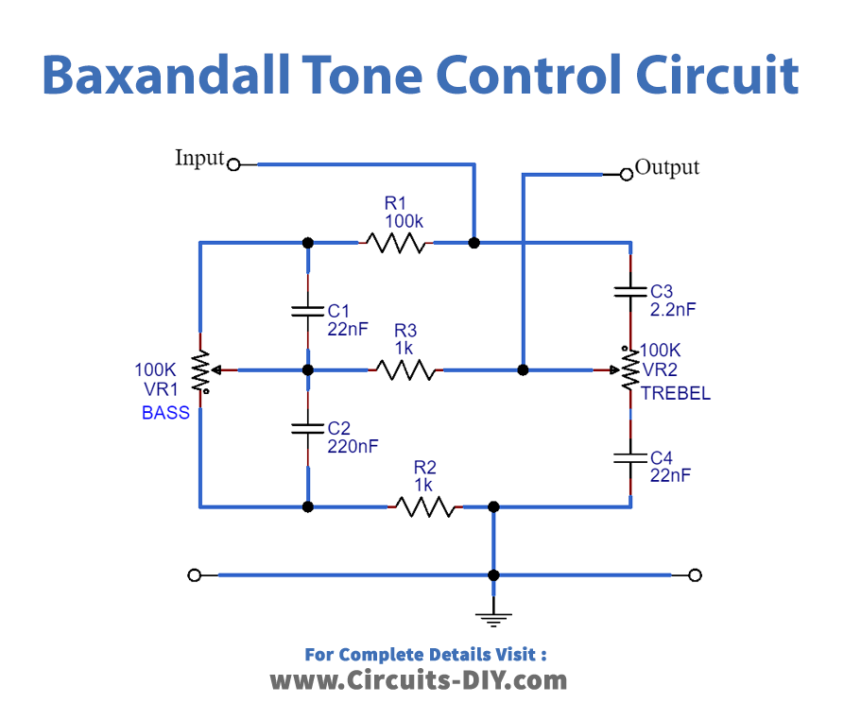The tone control is a type of equalization used to make specific pitches or “frequencies” in an audio signal softer or louder. A tone control circuit is an electronic circuit that consists of a network of filters that modify the signal before it is fed to speakers, headphones, or recording devices by way of an amplifier. It allows listeners to adjust the sound to their liking and compensate for recording deficiencies, hearing impairments, room acoustics, or shortcomings with playback equipment. For example, older people with hearing problems may want to increase the loudness of high pitch sounds they have difficulty hearing.
It can be used to adjust an audio signal during recording. For instance, if the acoustics of the recording site causes it to absorb some frequencies more than others, tone control can be used to amplify or “boost” the frequencies the room dampens. Here we design a simple Baxendale tone control circuit with easily available components.
Hardware Required
| S.no | Component | Value | Qty |
|---|---|---|---|
| 1. | Resistor | 100KΩ,1KΩ,10KΩ | 1,1,1 |
| 2. | Variable Resistor | 100KΩ | 2 |
| 3. | Capacitor | 22nF,2.2nF,220nF | 2,1,1 |
| 4. | Connecting Wires | – |
Circuit Diagram

Working Explanation
The Baxandall tone circuit makes its name by having very low harmonic distortion. Here as we can see in the circuit, this is a passive tone control circuit made with easy-to-use few components. As it has two variable resistors namely VR1 and VR2, these are placed to control the bass and treble effect of the audio signal. In the end, we can get output from a simple filtering process.
Applications
Used in many sound systems: radios, portable music players, boom boxes, public address systems, and musical instrument amplifiers.













